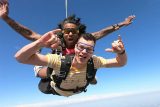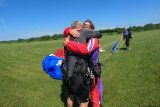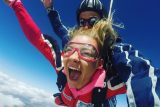WHAT ARE THE PHYSICAL FITNESS REQUIREMENTS FOR SKYDIVING?
Skydiving Safety
Posted by: Wisconsin Skydiving Center 3 years ago
Each first-time jumper plays an active role in their tandem skydive which, some are surprised to learn, requires a bit of physical effort. Now, we’re not saying you need to have a high level of physical fitness, but there are some light biomechanics that come with performing a skydive. Participants should be able to display a bit of flexibility, core strength, crouching/kneeling, and mental acuity.
We’re going to go over all you’ll need to know to prepare your body for skydiving!
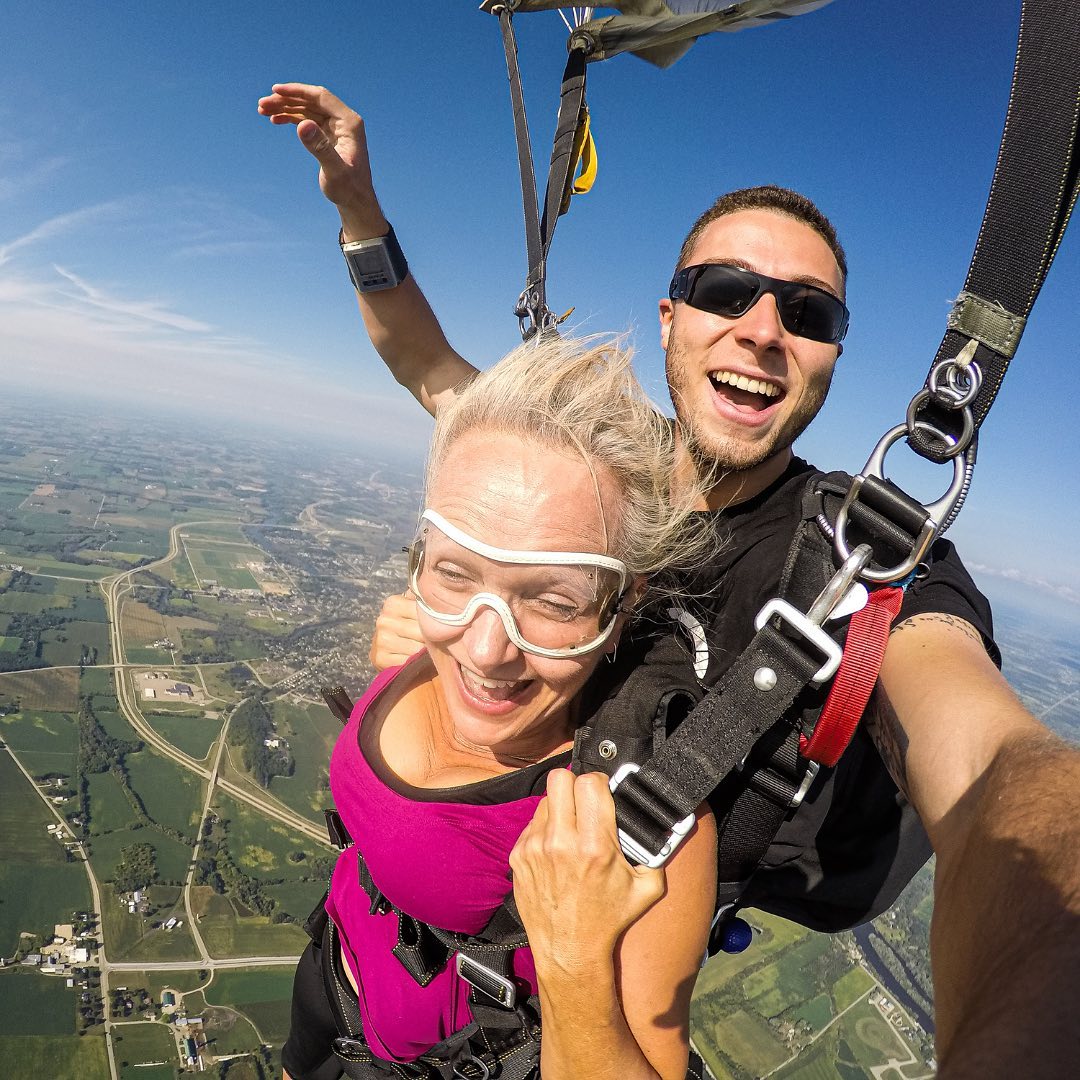
HEALTH RESTRICTIONS
When it comes to medical conditions, we take things very seriously. Safety first, always. This is especially true if you have high blood pressure, diabetes, a disability, or any other health considerations. You’ll want to take into account the skydiving health restrictions and requirements.
So, can you skydive with a medical condition? Well, the answer isn’t so black and white – we take things on a case-by-case basis depending on the situation and the input of your healthcare provider. The healthcare provider has a better understanding of your specific health risks when making a skydive and will be able to advise you appropriately.
You might be surprised to know that there are very few medical conditions that actually prevent you from skydiving – and there are many incredible amputees, paraplegic, and blind skydivers who jump on a regular basis!
At Wisconsin Skydiving Center, our chief instructor can accommodate all tandem skydivers who require accommodations when it comes to mobility concerns – so come on out!
WEIGHT REQUIREMENTS
At Wisconsin Skydiving Center, our weight limit for tandem skydivers is 260 lbs, and additional charges are assessed for anyone over 200 lbs. Weight restrictions are imposed for the safety of you and your instructor, and not for punitive or discriminatory reasons.
Skydiving rigs are issued a maximum weight limit by the Federal Aviation Administration (FAA) and the specific gear manufacturer. Typically, the maximum safe weight a rig can take is in the vicinity of 500 lbs – including the tandem instructor, tandem student (you!), and the weight of the gear. This is why tandem students are restricted to a max of 260 lbs.
Furthermore, more weight under parachute increases terminal velocity. This translates to a harder (and kinda painful) parachute opening – which is hard on your instructor, you, and the gear. So, in order to minimize the risk of injury and damage to the parachute, a weight restriction is implemented.
As far as height limits go, as long as the individual is under the weight limit, tall people can jump too! (Bring it on 6’5” skydivers – we’ve got you!!)
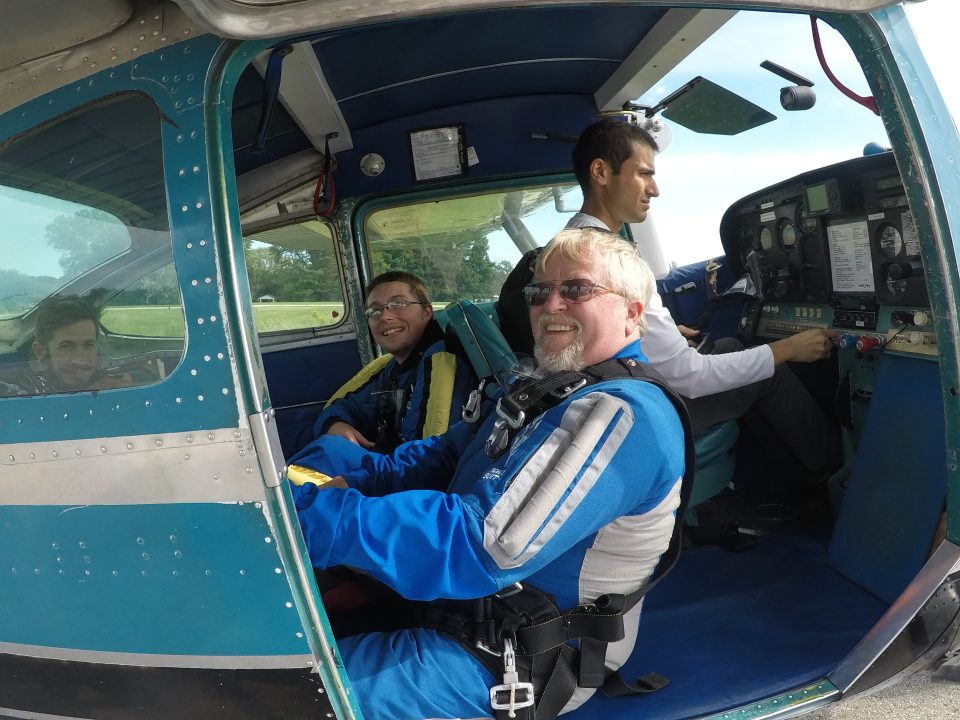
CROUCHING TO BOARD THE AIRCRAFT
Boarding a skydiving plane is a whole lot different than boarding a commercial aircraft.
The space in a skydiving aircraft is minimal, and if you’re lucky there’s bench seating instead of “luxury” seating. And jetway? Pssh. You’ll need to duck, crouch, and shimmy your way onto the airplane to prepare for your flight to altitude. If that’s no big deal, that’s good news! But if that sounds painful, you might be second-guessing your decision at boarding!
KNEEL TO EXIT THE AIRPLANE
When it’s time to exit the aircraft, you’ll need to crouch and shuffle back towards the open door of the aircraft. You’ll be securely harnessed to your instructor at this point, which can impact your mobility and balance.
When it’s go time, your instructor will have you kneel down in the door to get as close to the edge as possible. A bit of agility is required to pull off these perhaps awkward movements
BODY FLIGHT FLEXIBILITY
During your training session prior to your skydive, your instructor will go over the proper body position for freefall. The correct body position, called the arch, requires a bit of flexibility – which can put a lot of pressure on your lower back.
If you have current or previous back issues, this position may be adjusted for your comfort – just let your instructor know! And as always, consult a physician if you believe skydiving might be hard on your back.
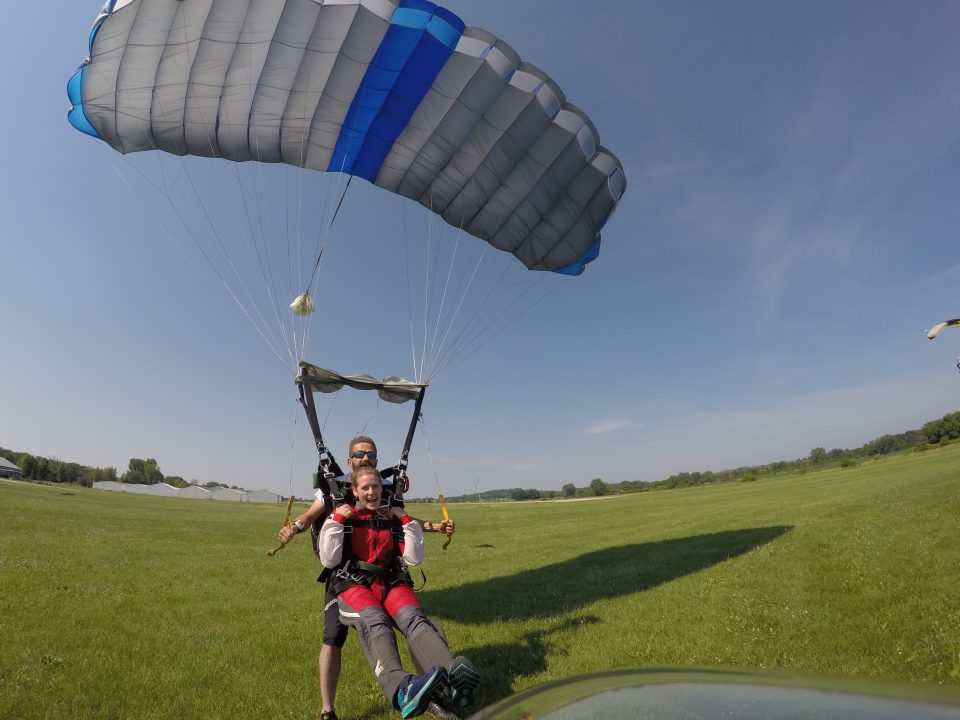
LIFT YOUR LEGS FOR LANDING
One of the most important roles during your tandem skydive is the landing. This is your time to shine! To avoid any injuries to your knees, feet, and ankles, you’ll be asked to lift your legs for landing – this requires a good amount of core strength.
Lifting your legs allows the instructor to land the canopy without stumbling over top of you. Usually, the instructor will gradually slide you into home base on your bottom, but in some cases the instructor will stand you up – it depends on certain conditions. It’s always best to listen to your instructor’s guidance … which brings us to the next section …
MENTAL ALERTNESS
Cognitive ability, mental alertness, quick reaction time, and the ability to follow directions are critical for skydiving. These requirements are non-negotiable because it directly impacts the safety of everyone involved.
The physical fitness requirements for skydiving are slim in comparison to the multitude of psychological benefits and positive physical effects skydiving will have on your body. The best thing about skydiving is that skydiving is for everybody and every BODY!
Come have the best skydiving experience in the midwest with Wisconsin Skydiving Center. Contact one of our awesome team members today! Blue skies!
